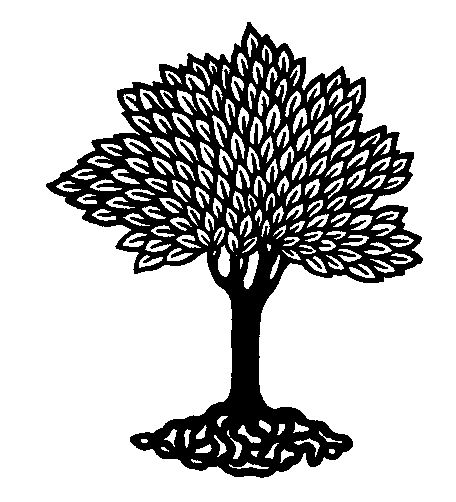
 |
Plant Taxonomy (BIOL308) - Stephen G. Saupe, Ph.D.; Biology Department, College of St. Benedict/St. John's University, Collegeville, MN 56321; ssaupe@csbsju.edu; http://www.employees.csbsju.edu/ssaupe/ |
The Cladistic Telephone
The following ideas and examples have been lifted from an article by Ben Waggoner, "The Cladistic Telephone," that was submitted for publication to the American Biology Teacher. This is an excellent article and a very creative idea (I wish I thought of it first) - check it out for more details.
Exercise 1. Plotting Changes on a Cladogram
Assume that this diagram (click
here; pdf) represents the results of a
game of "Telephone." The lines of this "cladogram" represent chains of
individuals who pass along the message. There are three individuals, at
the "nodes," who pass on the message to another chain of individuals for a new
branch or clade. At the root of the "cladogram" is the first person
who was given the phrase, "I saw the best minds of my generation destroyed by
madness, starving, hysterical, naked..." This person whispered the phrase
to the next and so on. Further assume that the original phrase is the pleisomorphic, or primitive, condition. Now, plot all the apomorphies on the cladogram.
In
other words, show where the message mutated to its new "derived" condition.
Exercise 2. Recreating a Phylogenetic Chain
Consider another game of "Telephone" in which the
individuals are arranged into three clades (branches) with two nodes (see
diagrams). Further assume that the starting phrase
for this game was "Love is a dream that can never go wrong - And I am the Queen of Romania"
and that by the end of the chain there were three results: "Love is a thing
that can never go wrong. I am the Queen of Shemania," "Covet the thing
that never goes wrong. I am the Queen of Romania," and "Covet the things that go
wrong, for I am the Queen of India." Now, decide which of the two
branching patterns (A or B) would most likely have given these results. To
do this, start by plotting the changes on just one of the cladograms (for
example, Cladogram A). Then, plot
each of same changes on the other cladogram. Select the cladogram (A or B) that best fits
the data (is most parsimonious).
|
| Top | Plant Tax. Home | SGS Home | Disclaimer | |
Last updated:
08/20/2007 / � Copyright by SG
Saupe